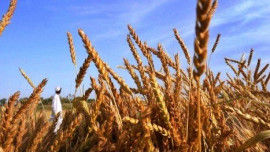
The Rawal Lake monitoring committee has decided to ban future construction in its catchment areas and watershed region without prior environmental approval.
Asif Shuja, the committee’s chairperson, who is also the director-general of the Pakistan-Environment Protection Agency (Pak-EPA), said the committee agreed this week to issue a notification for a blanket ban on unapproved new structures in the lake’s catchment areas.
“The lake’s water is derived from rainfall in the catchment areas, which flows into the lake,” Shuja said. “Over the years, most of the catchment areas have been turned into human settlements.” He said the Rawal Lake is a source of drinking water for over 2 million residents of Rawalpindi. But untreated waste discharged into the lake from illegal human settlements and livestock pens in the catchment areas are a threat to the quality of the water. The waste also puts the ecology of the lake at risk.

Rawal Dam was built on the Korang River in 1960 and the lake’s catchment areas stretch from Bani Gala to Tret. ICT Zoning Regulations 1992 forbid any construction in areas adjoining all water bodies, lakes and reservoirs, and the Pakistan Environment Protection Act 1997 requires construction projects to submit an environmental impact report before the project begins.
Environmental law enforcers said builders should not be allowed to acquire land in catchment areas in the first place. They blamed the Capital Development Authority (CDA) and ICT administration for either conniving with builders or turning a blind eye.
Islamabad DC Amir Ali Ahmed denied there was administrative connivance but said violations have not been checked. “Encroachments built over 30 years cannot be removed in a year.” He said illegal constructions are being dealt as a policy matter so that locals are not treated unfairly but they take responsibility for environmental impact.
The Rawal Lake monitoring committee, which receives regular reports from Water and Sanitation Agency (WASA) about Rawal Lake’s water quality, includes representatives from CDA, ICT, WASA and Small Dams Organisation. It was formed during the proceedings of a Supreme Court suo motu case regarding pollution in the lake. The apex court finally disposed off the case in February after the Cabinet Division and WASA assured the court the lake’s water was fit for consumption.

Water treatment
WASA has an operational water treatment plant at the lake which treats outgoing water supply, but the water falling into the lake is at risk of pollution. Pak-EPA has plugged 511 drain pipes discharging raw sewage into streams that fell into the Rawal Lake. The Rawalpindi District Environment Office has also cracked down on Murree poultry farms discharging effluents in the Rawal Lake.
A septic tank and a soaking pit have been built in Bari Imam for the human waste being discharged into the Rawal Lake from 103 bathrooms set up near the shrine for use by devotees. “But these are temporarily solutions,” Shuja said. “The ultimate solution is water treatment plants that clean water entering the lake.”
CDA had conducted a study for a Rs3 billion project to install four water treatment plants at the inlet points of the Rawal Lake, said sources. The project ‘s PC-I was sent to the interior ministry for funding. The Planning Commission is going over the PC-I at the moment.
Meanwhile, a Pak-EPA official said the agency has advised against a proposal to build a floating platform in the middle of the Rawal Lake for leisure by the Small Dams Organisation. This platform would inevitably result in water pollution as people might discard food items in to the lake, the official said.
Published in The Express Tribune, July 20th, 2013.
































1714024018-0/ModiLara-(1)1714024018-0-270x192.webp)










COMMENTS
Comments are moderated and generally will be posted if they are on-topic and not abusive.
For more information, please see our Comments FAQ